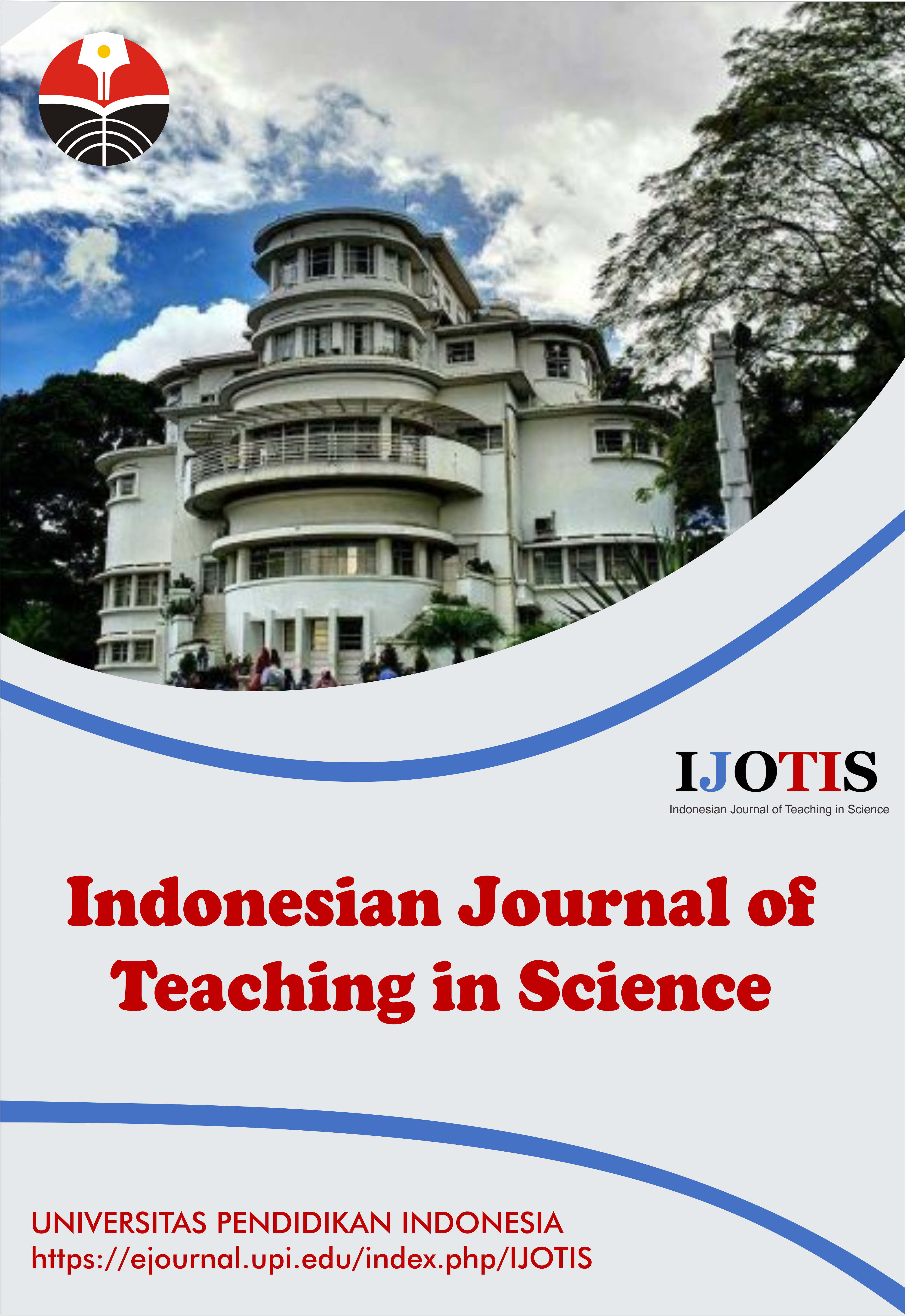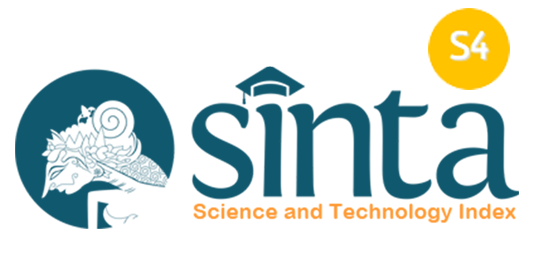Students Self-Assessment of Demonstration-Based Flipped Classroom on Senior Secondary School Students’ Performance in Physics
Abstract
Keywords
Full Text:
PDFReferences
Adeyemi, T. O. (2017). Influence of teacs' teaching experience on students' learning outcome in secondary schools in Ondo State, Nigeria. African Journal of Educational Studies in Mathematics and Sciences, 5(7), 50 - 62.
Adeyemo, A. S. (2011). The effect of teachers’ perception and students’ perception of physics classroom learning environment on their academic achievement in senior secondary schools physics. International Journal of Educational Research and Technology, 2(1), 74- 81.
Adeyemo, S. A. (2018). teaching/learning of physics in Nigerian secondary schools: The curriculum transformation, issues, problems, and prospects. International Journal of Educational Research and Technology, 1(1), 99-111.
Akanbi, O. A. (2018). Hydrogeological characterisation and prospect of basement Aquifers of Ibarapa region, southwestern Nigeria. Applied Water Science, 8(3), 1-22.
Aremu, A., Thomas, O., and Promise, I. C. (2015). Flipped classroom: An outstanding pedagogical innovation for teaching – learning physics in hig education in Nigeria. International Journal of Educational Research and Technology, 12(2), 329-333.
Arnold, G. S. (2014). The flipped classroom teaching model and its use for information literacy instruction. Communications in Information Literacy, 8(2), 7-22.
Ashkhia, O. A. (2016). Students and teams perception of the causes of poor academic performance in Ogun state secondary schools [Nigeria]: Implications for counseling for national development. European Journal of Social Studies, 3(2), 34-45.
Baepler, P., Walker, J. D., and Driessen, M. (2014). It's not about seat time: Blending, flipping, and efficiency in active learning classrooms. Computers and Education, 78, 227-236. Basal, A. (2015). The implementation of a flipped classroom in foreign language teaching. Turkish Online Journal of Distance Education, 16(4), 28-37.
Cabi, E. (2018). The Impact of the Flipped Classroom model on students' academic achievement. International Review of Research in Open and Distributed Learning, 19(3), 203-221.
Cantor, P., Os, D., Berg, L., Steyer, L., and Rose, T. (2018). Malleability, plasticity, and individuality: How children learn and develop in context. Applied Developmental Science Journal of Applied Development Studies, 2(1), 22-34.
Davies, R. S., Dean, D. L., and Ball, D. (2013). Flipping the classroom and instructional technology integration in a college-level information systems spreadsheet course. Educational Technology Research and Development, 61(4), 563-580.
Duffield , S., Wageman, J., Schultz, D., and Seth, C. R. (2014). Effects of the flippedclassroom model on student performance for advanced placement high school chemistry students. Journal of Chemical Education, 91(9), 34-54.
Hammond, D. L. (2019). Implications for the educational practice of the science of learning and development. Journal Applied Development Science, 12(2), 12-25.
Haristiani, N., and Rifa’i, M. M. (2020). Combining chatbot and social media: Enhancing personal learning environment (PLE) in Language Learning. Indonesian Journal of Science and Technology, 5(3), 487-506.
Huber, L., Siqueira, D. A., Jung, E., and Kim, M. (2016). An investigation into effective pedagogies in a flipped classroom: A case study. International Journal of Elearning and Distance Education, 32(2), 1-15.
Karadag, R., and Keskin, S. S. (2017). The effects of flipped learning approach on the academic achievement and attitudes of the students. New Trends and Issues Proceedings on Humanities and Social Sciences, 4(6), 158-168.
Kim, M. K., Kim, S. M., Khera, O., and Getman, J. (2014). The experience of three flipped classrooms in an urban university: An exploration of design principles. The Internet and Higher Education, 22, 37-50.
Maryanti, R. (2021). Assessment of mathematical abilities of students with intellectual disabilities during the covid-19 pandemic. Indonesian Journal of Community and Special Needs Education, 1(2), 47-52.
Mashxura, M., and Siddiqov, I. M. Z. (2023). Effects of the flipped classroom in teaching computer graphics. Eurasian Research Bulletin, 16, 119-123.
Nuhu, K. M., Adedokun, S. N. A., Asiyanbola, C., and Ajani, A. H. (2023). Assessment of students’ application of binary concept using-computer science-unplugged-method in a selected secondary school in Ilorin, Kwara State, Nigeria. ASEAN Journal of Science and Engineering Education, 3(1), 27-34.
Oliván Blázquez, B., Masluk, B., Gascon, S., Fueyo Díaz, R., Aguilar-Latorre, A., Artola Magallón, I., and Magallón Botaya, R. (2019). The use of flipped classroom as an active learning approach improves academic performance in social work: A randomized trial in a university. PloS One, 14(4), 1-15.
Omosewo, E. O., and Onasanya , S. A. (2010). Effect of improvised and standard instructional materials on secondary school students’ academic performance in physics in Ilorin, Nigeria. Singapore Journal of Scientific Research, 1, 68-76.
Oudbier, J., Spaai, G., Timmermans, K., and Boerboom, T. (2022). Enhancing the effectiveness of flipped classroom in health science education: a state-of-the-art review. BMC Medical Education, 22(1), 1-15.
Pathania, R. S. (2023). Assessment of achievement motivation, personality, and their relationship with socio-economic class of the engineering students. ASEAN Journal of Science and Engineering Education, 3(2), 163-170.
Pierce, R., and Fox, J. (2012). Vodcasts and active-learning exercises in a “flipped classroom” model of a renal pharmacotherapy module. American Journal of Pharmaceutical Education, 76(10), 1-5. Pugatch, T., and Schroeder, E. (2014).
Rasim, R., Rosmansyah, Y., Langi, A. Z., and Munir, M. (2021). Immersive intelligent tutoring system for remedial learning using virtual learning environment. Indonesian Journal of Science and Technology, 6(3), 507-522.
Riza, L. S., Rosdiyana, R. A., Pérez, A. R., and Wahyudin, A. (2021). The K-means algorithm for generating sets of items in educational assessment. Indonesian Journal of Science and Technology, 6(1), 93-100.
Siegle, D. (2014). Technology: Differentiating instruction by flipping the classroom. Gifted Child Today, 37(1), 51-55.
Smallhorn, M. (2017). The flipped classroom: A learning model to increase student engagement not academic achievement. Student Success, 8(2), 43-53.
Sointu, E., Hyypiä, M., Lambert, M. C., Hirsto, L., Saarelainen, M., and Valtonen, T. (2023). Preliminary evidence of key factors in successful flipping: Predicting positive student experiences in flipped classrooms. Higher Education, 85(3), 503-520.
Talbert, R. (2015). Inverting the transition-to-proof classroom. Primus, 25(8), 614-626. Wijaya, H., Maryanti, R., Wulandary, V., and Irawan, A. R. (2022). Numerical minimum competence assessment for increasing students’ interest in mathematics. ASEAN Journal of Science and Engineering Education, 2(3), 183-192.
Teac pay and student performance: Evidence from the Gambian hardship allowance Nigerian University. Contemporary Educational Technology, 2(1), 18 - 36.
Zahoor, A. B., and Gh, J. B. (2018). Flipped classroom method in contemporary teaching learning environment. international Journal Movement Education and Social Studies, 7(2), 641-653.
DOI: https://doi.org/10.17509/ijotis.v4i1.60876
Refbacks
- There are currently no refbacks.
Copyright (c) 2023 Universitas Pendidikan Indonesia

This work is licensed under a Creative Commons Attribution-ShareAlike 4.0 International License.
Indonesian Journal of Teaching in Science (IJoTIS) is published by Universitas Pendidikan Indonesia (UPI)
 Indonesian Journal of Teaching in Science
Indonesian Journal of Teaching in Science



